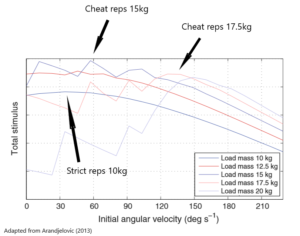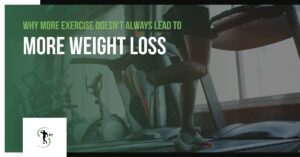If you look around in gyms around the world, most of the biggest guys, including pro bodybuilders can be seen throwing around some heavy ass weights with seemingly sloppy form.
Even the great Arnold Schwarzenegger who in his books and the encyclopedia of bodybuilding preaches about strict form and controlled reps has been known to throw around a bit of weight with less than “perfect” form.
Arnold throwing around some heavy iron in the famous scene from pumping iron where he is performing T-bar rows. Arnold wasn’t the only one. Many of the top bodybuilders have been known to train with somewhat sloppy form.
Most lifters, especially well-educated personal trainers who think they know better, scoff at the idea of performing less than perfect reps using a controlled tempo and squeezing the muscle through the full range of motion, and simply attribute all the success of these mass monsters to their superior genetics and steroids!
However, is it possible that these so called “roided up meatheads” know exactly what they are doing, and they train like that for a reason? Maybe they don’t understand the exact biomechanics of it, but I guarantee you that any guy that has put on a considerable amount of mass naturally or enhanced has experimented with many different training methods and found what works best for them. It would be a damn big coincidence if all the biggest guys, through trial and error arrived at the exact same conclusion, so maybe there is a method to their madness after all.
Well it so happens that we have some literature on this topic for those that are not convinced by the “it works best for me” argument. If that’s you then read on…
A fairly recent study by Ognjen Arandjelovi´ titled ‘Does cheating pay: the role of externally supplied momentum on muscular force in resistance exercise’, looked at the effects of “cheating” on muscular torque and the hypertrophic stimulus (1).
Cheating involves the use of external momentum by supporting muscles to help a lifter overcome the sticking point in a lift. Cheat reps often get a bad rep but as you will see in a minute, they can be a very useful tool if implemented properly.
When external momentum is applied at the point in a lift where the muscles are in a biomechanically inferior position to generate force, this allows a greater load to be applied in the range of motion where the muscles can generate maximum torque.
In fact, the study by Arandjelovi´ showed that you can generate significantly greater muscle torque using up to 50% more load than you can normally handle in strict form, by applying external momentum.
Below is a graph from the study which looked at the effect of various loads and the use of external momentum on net muscular torque and total hypertrophic stimulus during a dumbbell lateral raise.

In this particular case 10kg represented a 10-repetition max which could be performing in strict form without the use of any external momentum. As you can see from the graph, when external momentum was applied which permitted the use of greater loads, the net muscular torque and hypertrophic stimulus was greater.
The greatest net muscle torque and hypertrophic stimulus occurred in the 15kg condition with the use of moderate external momentum. However, in every single condition the use of greater loads with external momentum still outperformed the strict reps with 10kg.
That means if you normally perform dumbbell lateral raises with 10kg in strict form, it would actually benefit you more to add some weight and do at least 15kg with looser form, at least on some of the time.
The reason I don’t recommend training with loose form or cheat style reps too often is because everything comes at a price. In this case the greater muscle torque is also associated with greater joint stress and if you train like that too often it can increase the wear and tear on your joints and shorten your lifting career.
Through experience I’ve found that training with loose form about 20% of the time is the sweet spot for most people which is right in line with what Arnold used to recommend when performing exercises like the standing barbell curl.
Another benefit of doing cheat reps is that you end up handling a heavier load on the eccentric portion of the lift than you can normally lift. Contrary to what most people think studies have shown that fast eccentrics create greater tension and muscle damage than slow eccentrics (2-8). Slow eccentrics increase time under tension but decrease peak torque because you end up using a lower load.
Furthermore, the heavy loads used during the cheat style reps condition the nervous system and Golgi sensory organ to handle heavier loads even with strict form. There was a time when I just couldn’t get past 180lbs on barbell rows training in strict form. Once I started implementing cheat reps and worked my way up to 330lbs, I could handle 275lbs in strict form with ease, which is was significantly more than before. My back also got significantly bigger.
I’ve had the same experience with clients that had been stuck on the same poundages on some exercises for a while, and once we started implementing cheat reps, they quickly broke through the plateau and increased both their strength and size considerably.
Of course, this style of training is not for everyone. Some individuals, typically those that overproduce cortisol and stress hormones, would have an anxiety attack about breaking form. These individuals’ value perfect form above all else so for them the stress response is just not worth it. There are other ways you can overload the maximum torque position of an exercise which I will address in future blogs.
If you do want to try implementing cheat reps here is how I recommend going about it.
1) On the last set of an exercise knock out a couple of cheat reps once you hit failure to extend time under tension at the maximum torque position.
2) On your last set of an exercise add about 20% more weight on the bar and perform cheat style reps to overload with maximum torque position with a heavier load.
I personally prefer the second method, but you can experiment to see which works best for you. More anxious individuals will generally do better with the first method because they don’t have to use a supramaximal load. Either way, I don’t recommend performing either method more than once a week per body part and only on certain exercises that are well suited to it like bent over rows, curls, and lateral raises.
References
- Arandjelović, O. Does cheating pay: the role of externally supplied momentum on muscular force in resistance exercise. European Journal Of Applied Physiology. 2013, 113(1), 135-145.
- Shepstone TN, Tang JE, Dallaire S, Schuenke MD, Staron RS, Phillips SM. Short-term high- vs. low-velocity isokinetic lengthening training results in greater hypertrophy of the elbow flexors in young men. J Appl Physiol (1985). 2005 May;98(5):1768-76.
- Chapman DW, Newton M, McGuigan M, Nosaka K. Effect of lengthening contraction velocity on muscle damage of the elbow flexors. Med Sci Sports Exerc. 2008 May;40(5):926-33
- Jonathan P. Farthing, Philip D. Chilibeck. The effects of eccentric and concentric training at different velocities on muscle hypertrophy. Eur J Appl Physio 2003 Aug;89(6):578-86.
- Chapman D1, Newton M, Sacco P, Nosaka K. Greater muscle damage induced by fast versus slow velocity eccentric exercise. Int J Sports Med. 2006 Aug;27(8):591-8.
- Shepstone TN, et al. Short-term high- vs. low-velocity isokinetic lengthening training results in greater hypertrophy of the elbow flexors in young men. J Appl Physiol (1985). 2005 May;98(5):1768-76.
- Chapman D, Newton M, Sacco P, Nosaka K (2006) Greater muscle damage induced by fast versus slow velocity eccentric exercise. Int J Sports Med. 2006 Aug;27(8):591-8.
- Shepstone TN, Tang JE, Dallaire S, Schuenke MD, Staron RS, Phillips SM (2005) Short-term high- vs. low-velocity isokinetic lengthening training results in greater hypertrophy of the elbow flexors in young men. Journal of Applied Physiology May 1. 2005 vol. 98 no. 5 1768-1776







